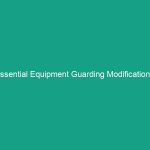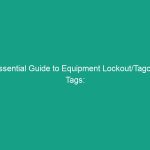Introduction
In today’s fast-paced work environments, ensuring the Safety of personnel while operating boats is a critical concern. The importance of Health, Safety, and Environment (HSE) practices cannot be overstated in maritime operations. Boat Safety for work operations is not just a regulatory requirement; it is a fundamental aspect of protecting lives, assets, and the environment. Understanding the risks associated with boat operations and implementing effective Safety Measures is essential for any organization involved in maritime activities.
Regulatory Frameworks for Boat Safety
The regulatory landscape surrounding boat safety is complex and varies by region and type of Operation. Compliance with these Regulations is crucial for ensuring the safety of workers and minimizing environmental impact. Key regulatory bodies include the Occupational Safety and Health Administration (OSHA) in the United States, the International Maritime Organization (IMO), and various local maritime authorities.
Key Regulations and Standards
Organizations must adhere to several regulations that govern boat safety for work operations. The following are some of the most significant regulations:
- osha Standards: OSHA outlines specific safety requirements for vessels and workboats, including Training, equipment Maintenance, and emergency Procedures.
- IMO Guidelines: The IMO provides international guidelines on maritime safety, including the Safety of Life at Sea (SOLAS) convention, which emphasizes the importance of safety equipment and crew training.
- Local Regulations: Depending on the region, local authorities may have additional safety regulations that need to be adhered to. This can include licensing, inspections, and environmental protection measures.
Compliance Challenges
While understanding and adhering to regulations is vital, organizations often face challenges in compliance. These may include:
- Lack of awareness or understanding of specific regulations.
- Inadequate training of personnel on compliance requirements.
- Insufficient resources allocated for Safety Measures and compliance checks.
Addressing these challenges involves continuous training and development, ensuring that all personnel are aware of current regulations and their implications for boat safety for work operations.
Best Practices for Boat Safety
Implementing Best Practices in boat safety is essential for minimizing risks during work operations. Organizations should develop a comprehensive safety management system that includes the following Best Practices:
Risk Assessment and Management
A thorough risk assessment process is the foundation of effective safety management. This involves identifying potential Hazards associated with boat operations, evaluating the risks, and implementing controls to mitigate them. Regular reviews of risk assessments are necessary to adapt to changing conditions or operations.
Training and Competency Development
Ensuring that all personnel are adequately trained and competent in boat operations is crucial. Training should cover various aspects, including:
- Emergency response procedures
- Use of Personal Protective Equipment (PPE)
- Operational procedures and guidelines
- Environmental awareness and protection measures
Regular refresher courses and drills can help maintain high competency levels among crew members.
Maintenance and Inspection Protocols
Regular maintenance and inspections of boats and equipment are essential for ensuring their safe operation. Organizations should establish a routine maintenance schedule that includes:
- Inspection of safety equipment (life jackets, fire extinguishers, etc.)
- Regular checks of engines and propulsion systems
- Monitoring of weather conditions and their impact on operations
Keeping detailed records of inspections and maintenance activities can help demonstrate compliance with regulations and improve accountability.
Case Studies in Boat Safety
Learning from real-world incidents can provide invaluable insights into the importance of boat safety for work operations. Below are a few case studies that highlight critical safety lessons.
Case Study 1: The Importance of Emergency Preparedness
In a recent incident, a commercial fishing vessel capsized due to severe weather conditions. The crew, unprepared for such emergencies, faced significant challenges in executing their safety protocols. Fortunately, a nearby vessel was able to assist and rescue the crew, but the incident underscored the necessity of comprehensive emergency preparedness training and drills. Organizations should prioritize regular emergency drills that simulate various scenarios to ensure that crew members are ready to respond effectively.
Case Study 2: Equipment Failure and Its Consequences
A maintenance oversight led to the failure of a critical component on a workboat, resulting in a near-miss incident during operations. The investigation revealed that the maintenance logs were not updated, and the crew was unaware of the equipment’s condition. This incident highlighted the importance of thorough maintenance practices and the need for accountability in documenting inspections and repairs. Ensuring that all crew members understand the importance of equipment checks can significantly reduce the likelihood of similar incidents.
Challenges in Boat Safety for Work Operations
Despite the established regulations and best practices, organizations often encounter challenges in maintaining boat safety for work operations. Some of these challenges include:
Cultural Barriers to Safety
In some organizations, a culture that prioritizes productivity over safety can lead to risky behaviors. Employees may feel pressured to overlook safety protocols to meet operational demands. To combat this, leadership must foster a culture of safety that emphasizes the importance of HSE in every aspect of operations.
Technological Advancements and Adaptation
As technology evolves, so do the tools and methods used in boat operations. While advancements can enhance safety, they also require organizations to adapt quickly. This may involve training personnel on new technologies and ensuring that safety protocols are updated accordingly. Regular technology assessments and employee feedback can help organizations stay ahead of potential challenges.
Future Trends in Boat Safety for Work Operations
Looking ahead, several trends are emerging that may influence boat safety for work operations. These trends include:
Increased Focus on Environmental Safety
As environmental regulations become more stringent, organizations will need to enhance their focus on environmental safety. This includes adopting practices that minimize pollution and protect marine ecosystems. Training crews on environmental stewardship and implementing waste management strategies can help organizations comply with regulations while fostering a culture of responsibility.
Integration of Artificial Intelligence and Automation
Advancements in artificial intelligence (AI) and automation are beginning to reshape the maritime industry. AI can assist in predictive maintenance, helping to identify potential equipment failures before they occur. Additionally, automated systems can enhance navigation safety, reducing the likelihood of human error. Embracing these technologies requires organizations to invest in training and adapt their safety protocols to integrate new systems effectively.
Conclusion
In conclusion, boat safety for work operations is a multifaceted concern that requires a commitment to HSE principles. By understanding the regulatory frameworks, implementing best practices, learning from case studies, and addressing challenges, organizations can significantly enhance their safety measures. As the maritime industry continues to evolve, staying informed about future trends and adapting accordingly will be crucial. We encourage all stakeholders in maritime operations to prioritize safety, invest in training, and cultivate a safety-first culture that protects both personnel and the environment.


